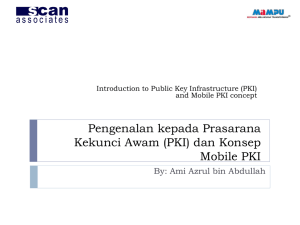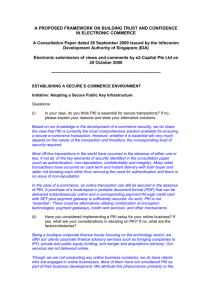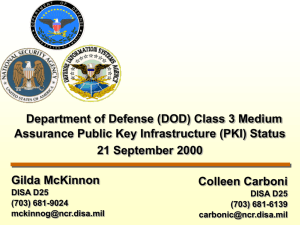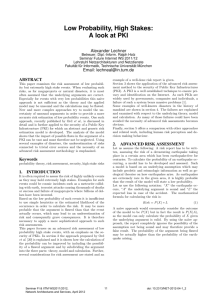CAC/PKI FAQ
advertisement
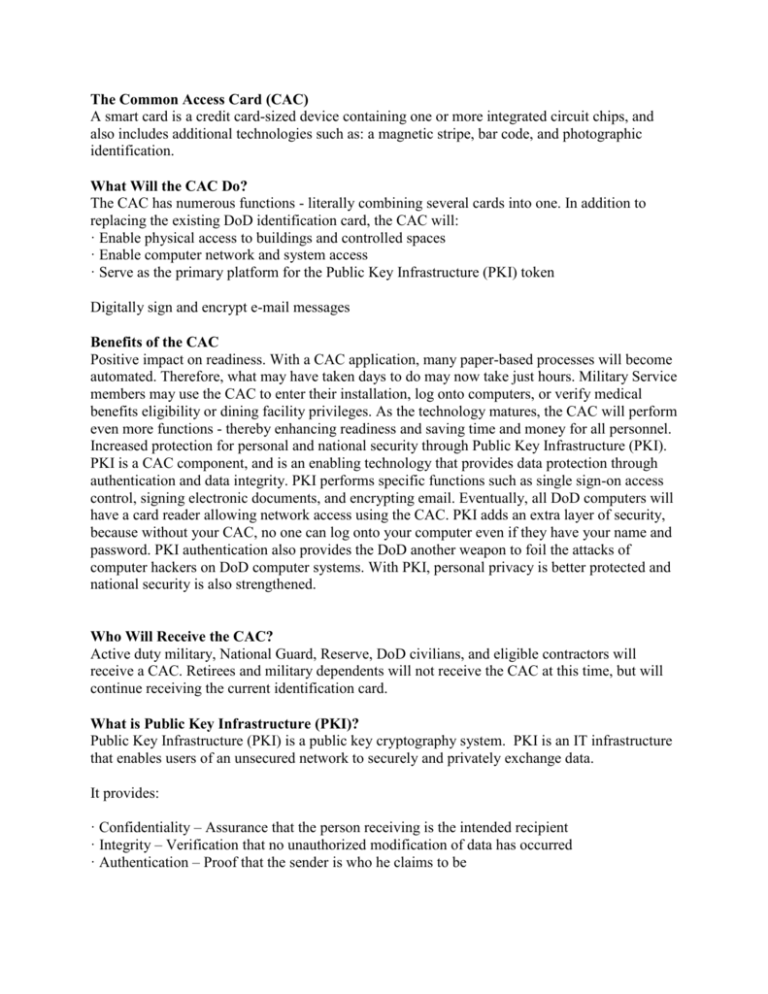
The Common Access Card (CAC) A smart card is a credit card-sized device containing one or more integrated circuit chips, and also includes additional technologies such as: a magnetic stripe, bar code, and photographic identification. What Will the CAC Do? The CAC has numerous functions - literally combining several cards into one. In addition to replacing the existing DoD identification card, the CAC will: · Enable physical access to buildings and controlled spaces · Enable computer network and system access · Serve as the primary platform for the Public Key Infrastructure (PKI) token Digitally sign and encrypt e-mail messages Benefits of the CAC Positive impact on readiness. With a CAC application, many paper-based processes will become automated. Therefore, what may have taken days to do may now take just hours. Military Service members may use the CAC to enter their installation, log onto computers, or verify medical benefits eligibility or dining facility privileges. As the technology matures, the CAC will perform even more functions - thereby enhancing readiness and saving time and money for all personnel. Increased protection for personal and national security through Public Key Infrastructure (PKI). PKI is a CAC component, and is an enabling technology that provides data protection through authentication and data integrity. PKI performs specific functions such as single sign-on access control, signing electronic documents, and encrypting email. Eventually, all DoD computers will have a card reader allowing network access using the CAC. PKI adds an extra layer of security, because without your CAC, no one can log onto your computer even if they have your name and password. PKI authentication also provides the DoD another weapon to foil the attacks of computer hackers on DoD computer systems. With PKI, personal privacy is better protected and national security is also strengthened. Who Will Receive the CAC? Active duty military, National Guard, Reserve, DoD civilians, and eligible contractors will receive a CAC. Retirees and military dependents will not receive the CAC at this time, but will continue receiving the current identification card. What is Public Key Infrastructure (PKI)? Public Key Infrastructure (PKI) is a public key cryptography system. PKI is an IT infrastructure that enables users of an unsecured network to securely and privately exchange data. It provides: · Confidentiality – Assurance that the person receiving is the intended recipient · Integrity – Verification that no unauthorized modification of data has occurred · Authentication – Proof that the sender is who he claims to be Non-repudiation – Assurance that the person sending cannot deny participation. PKI is a relatively simple system that utilizes the security features found in many of today's popular software programs and packages such as Microsoft Outlook, Internet Explorer, and Netscape Navigator. As more and more transactions that are vital to the mission of the DoD are sent over publicly accessible communication lines, PKI will help ensure that these transmissions are safe from outside threats. How PKI Works: PKI works using standard cryptographic principals. Specifically, PKI uses public key cryptography. In simple terms, the cryptographic processes "code" and "decode" information. In PKI, the applicable terms are encrypt and decrypt. When information or text is encrypted it becomes cipher text. Cipher text can not be read until it is decrypted. In public key cryptography two related keys are used to encrypt and decrypt information. One key is private and the other is public. Either key can be used for encryption or decryption depending on the desired operation. When one key is used to encrypt information only the related key can be used to decrypt the information. The public portion of the key can be made available for other users to easily obtain. 1. John's computer will use Mary's public key to encrypt the message. 2. Mary will decrypt the message using her private key. 3. Mary encrypts a response using John's public key. 4. John uses his private key to then decrypt the message. 5. Anyone who attempts to read the message without the private key will see the subject line, but the body of the message will appear as nothing but garbled text. Smart Card Authentication Middleware: Smart card middleware manages the passwords and private keys that produce the user's online identity and authenticate access to critical resources. Smart card digital identity software provides a high level interface to PKI credentials and other login credentials residing on the card. The middleware acts as a conduit between the cryptographic functionalities provided by the card and the network applications. Some uses of the smart card middleware: · Network login, remote access, and secure web access · Email signing with legally enforceable digital signatures · Email encryption and decryption · Management of basic benefit, entitlement, medical, and demographic data to reduce paperwork Any PC that you use a CAC reader with requires the middleware. This enables the PC/Windows Operating System and the reader to communicate with each other. The middleware used by USUHS as its smart card desktop client software is ActivCard Gold. Please contact your local system administrator, for more information on obtaining the CAC middleware.






